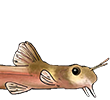Megalancistrus parananus
Megalancistrus parananus
I'm seriously considering picking up a 12 inch Mega but I have a couple questions I'm hoping someone can help with,
First, I've heard mixed opinions about this fishes aggression, some say very, some say not at all, what say you?
Second, Diet, again mixed opinions from herb to omniv to carniv, any thoughts?
Third, tankmates, I'm thinking large school of Cardinals and maybe a pair of some type of small Geos, tank is 6x2x2
Honestly I'm interested in hearing any and all input from keepers and ex-keepers of this fish.
Thanks
First, I've heard mixed opinions about this fishes aggression, some say very, some say not at all, what say you?
Second, Diet, again mixed opinions from herb to omniv to carniv, any thoughts?
Third, tankmates, I'm thinking large school of Cardinals and maybe a pair of some type of small Geos, tank is 6x2x2
Honestly I'm interested in hearing any and all input from keepers and ex-keepers of this fish.
Thanks
- grokefish
- Posts: 1554
- Joined: 13 Apr 2006, 19:28
- My images: 3
- My aquaria list: 1 (i:0)
- Spotted: 2
- Location 1: The Vandart Aquarium South Wales
- Interests: Life the universe and everything
Re: Megalancistrus parananus
All I can say is I saw a big one of these in a shop over here and it was one of the coolest fish I have ever seen.
Matt
Matt
One more bucket of water and the farce is complete.
- taksan
- Posts: 341
- Joined: 24 Mar 2005, 14:03
- My images: 3
- My cats species list: 7 (i:0, k:0)
- Spotted: 1
- Location 1: Australia and Uk
- Location 2: Sydney and Surrey
Re: Megalancistrus parananus
They like Tetra bottom feeder tablets, bloodworm, algae tablets (although they don't clean the algae off the glass like a gibby would) etc etc usual mixed diet although if you could feed them freshwater sponges you'd be giving them the ultimate diet.
And yes they are aggressive compared to other plecos ..not as aggressive as a Adonis or a Psuedi sp but still they ain't nice to be around if your another bottom feeder.
Big fish though they grow well past 30" in a average tank and will outgrow a 6x2x2 easily and are VERY nasty to catch as they are spiky and nasty when stressed.
There are easier plecos more suitable for a 6x2x2 IMHO.
Mega's are really fish for big tanks and should be kept with rays and pims etc.
And yes they are aggressive compared to other plecos ..not as aggressive as a Adonis or a Psuedi sp but still they ain't nice to be around if your another bottom feeder.
Big fish though they grow well past 30" in a average tank and will outgrow a 6x2x2 easily and are VERY nasty to catch as they are spiky and nasty when stressed.
There are easier plecos more suitable for a 6x2x2 IMHO.
Mega's are really fish for big tanks and should be kept with rays and pims etc.
Re: Megalancistrus parananus
I agree, very cool...and spinygrokefish wrote:All I can say is I saw a big one of these in a shop over here and it was one of the coolest fish I have ever seen.
Matt
Wow, you grew yours past 30" in an average size tank, impressive. How long did that take you?taksan wrote:They like Tetra bottom feeder tablets, bloodworm, algae tablets (although they don't clean the algae off the glass like a gibby would) etc etc usual mixed diet although if you could feed them freshwater sponges you'd be giving them the ultimate diet.
And yes they are aggressive compared to other pl*cos ..not as aggressive as a Adonis or a Psuedi sp but still they ain't nice to be around if your another bottom feeder.
Big fish though they grow well past 30" in a average tank and will outgrow a 6x2x2 easily and are VERY nasty to catch as they are spiky and nasty when stressed.
There are easier pl*cos more suitable for a 6x2x2 IMHO.
Mega's are really fish for big tanks and should be kept with rays and pims etc.
Interesting you would suggest keeping them with rays and pims, those would have been some of the last fish I would have thought would do well with them, considering the Megas natural weaponry and the others comparitive lack of defences.
-
Fantasticfins
- Posts: 82
- Joined: 29 Feb 2008, 23:00
- I've donated: $80.00!
- My images: 3
- Spotted: 2
- Location 2: Livonia,Mi
- Interests: Spawning Hypancistrus
Re: Megalancistrus parananus
I have a couple of Megas. They are about the toughest fish I've owned. They are both aggressive towards red/orange fish. The parananus seems to enjoy killing and eating large Amphilophus citrinellum. Last one he murdered was about 17". And yes, he ate almost the whole fish after killing it.
Megalancistrus sp. aff. barrae

Megalancistrus parananus

Megalancistrus sp. aff. barrae

Megalancistrus parananus





